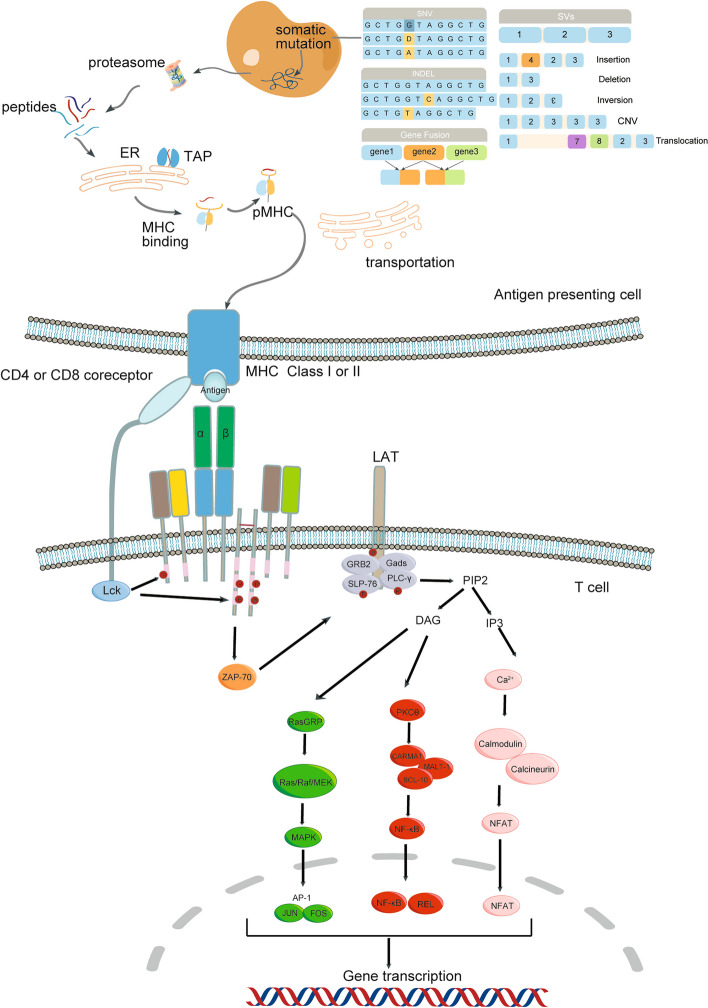Fig. 2.
Neoantigen presentation and regulatory mechanisms in T cell receptor signaling Neoantigen is generated by tumor cell genome mutation, transcribed and translated and cleaved to peptides different from normal self-proteins. Immunogenic neoantigen peptides are bound by MHC molecules (pMHC), and required for recognition by TCR and to initiate immune response. TCR signal is initiated by pMHC recognition of tumor cells or antigen-presenting cells. Then Lck is recruited to TCR-CD3 complex and phosphorylate ITAMs. Zap70 binds to phosphorylated ITAMs and is also phosphorylated itself by Lck. Activated ZAP70 subsequently phosphorylates Lat, which in turn induces the recruitment of adaptor proteins (GRB2, Gads, SLP-76, PLC-γ). Activation of LAT-related effectors results in signal transduction through 3 major signaling pathways. Calmodulin, MAPK and NF-кB signaling pathways. Calmodulin signaling leads to nuclear translocation of NFAT. MAPK signaling leads to actin polymerization and AP-1 activation, a transcription factor of FOS/ JUN complex. NF-кB signaling leads to nuclear translocation of transcription factors of REL and NF-кB

